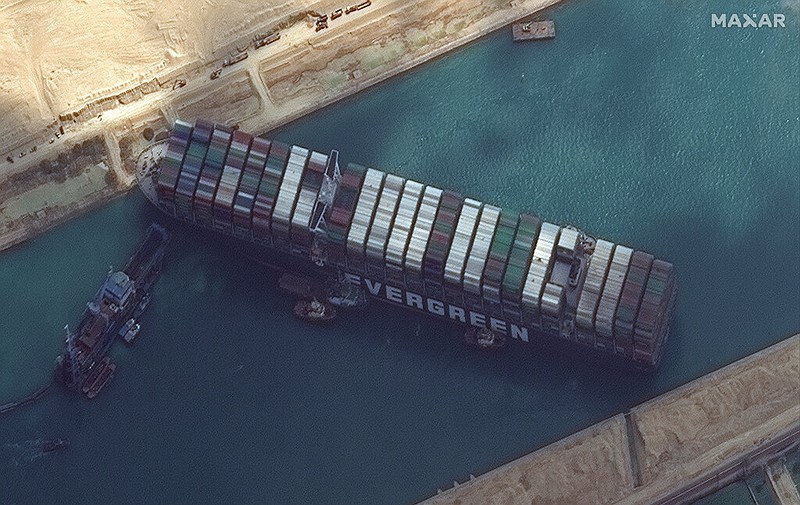Just over a week ago, the giant cargo ship Ever Given was blown sideways in a strong sandstorm and wedged itself across the Suez Canal like a giant cork. The monster vessel, longer than the height of the Empire State Building, was finally freed on Monday after workers dredged nearly a million cubic feet of sand at the bow and stern. But the 6-day snarl created a colossal 300-ship traffic jam, the effects of which are already showing up in higher product prices and exacerbating an already overburdened global supply chain.
The drama also served to highlight the world's dependence on a simple but revolutionary technology: intermodal transport, or the shipping container. It is no exaggeration to state that the humble box has remade the global economy.
Ocean transport is nearly as old as mankind, but until the mid-20th century, loading and unloading was costly and labor intensive, involving up to 200,000 individual pieces and often consuming as much time as the voyage itself. The traditional method, known as 'break bulk transport," involved unloading trucks at the dock, reloading the cargo aboard a ship with slings and baskets, then reversing the process at the destination port. During World War II, the U.S. military experimented with containerizing armaments and supplies in wooden crates, but it took a visionary entrepreneur to perfect the technique.
In 1955, Malcolm McLean owned the second-largest trucking company in America. McLean recognized the potential efficiency gain in setting truck trailers directly onboard the cargo ship. Eventually, he hit upon the idea of using trailer-length movable boxes offloaded from flatbed trucks onto the vessel.
The next year, McClean bought the Pan-Atlantic Steamship Company and outfitted a pair of WWII tankers to carry container boxes. On April 26, the SS Ideal X ushered in the age of intermodal freight transportation as it departed New Jersey with a load of 58 35-foot containers. The concept was so powerful and caught on so rapidly that international standards for 20- and 40-foot containers were adopted in 1961. Today at any given moment there are around 20 million containers in transit around the globe.
It is difficult to overstate the economic impact of the standardized container shipping industry on the explosion of global trade that has pulled tens of millions of people out of poverty. In 1956, the year McClean launched the Ideal X, hand-loading one ton of cargo aboard ship cost an average of $55 in 2019 dollars. Today, loading a modern container ship costs just 21 cents per ton, takes a fraction of the time, and uses 95% less manpower.
The ships have increased geometrically in size as well. The Ever Given, the vessel that jammed the Suez Canal, is one of the largest in the world with a capacity of 20,000 20-foot containers. For context, that one vessel has the capacity to carry 70 million pairs of shoes or almost 1 billion bananas. It would require a single train 80 miles in length to haul them all away.
Over 80% of all the world's international trade is carried by container ships. The cost has fallen so low that Scottish fisheries can afford to ship their huge catches of cod in refrigerated containers 10,000 miles away to China for filleting, before returning to Scotland for sale.
As Malcom McClean sat cooling his heels at the port waiting for his truckload of cotton to be unloaded, he had a vision of a better way. When he died in 2001, he was feted as the "Man of the Century" by the International Maritime Hall of Fame. Not bad for a one-time truck driver from North Carolina.
Christopher A. Hopkins is a certified financial analyst in Chattanooga.

